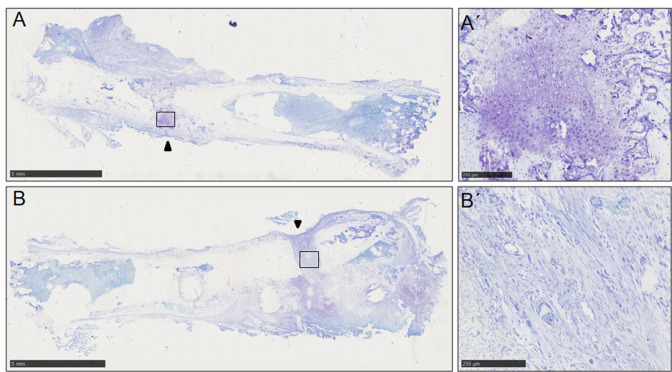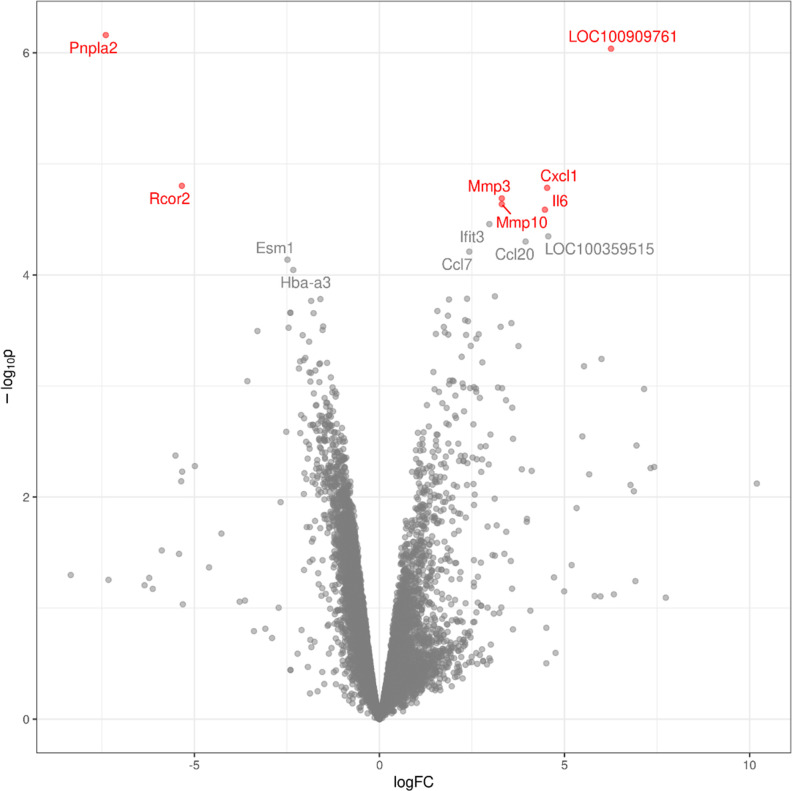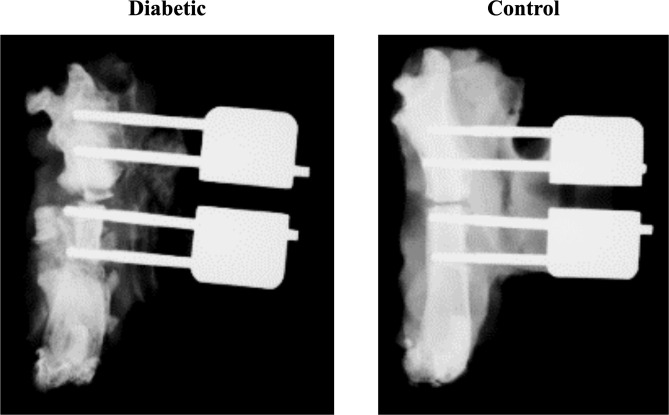Unbiased gene expression analysis of the delayed fracture healing observed in Zucker diabetic fatty rats.
IF 4.7
2区 医学
Q2 CELL & TISSUE ENGINEERING
引用次数: 0
Abstract
Aims Impaired fracture repair in patients with type 2 diabetes mellitus (T2DM) is not fully understood. In this study, we aimed to characterize the local changes in gene expression (GE) associated with diabetic fracture. We used an unbiased approach to compare GE in the fracture callus of Zucker diabetic fatty (ZDF) rats relative to wild-type (WT) littermates at three weeks following femoral osteotomy. Methods Zucker rats, WT and homozygous for leptin receptor mutation (ZDF), were fed a moderately high-fat diet to induce T2DM only in the ZDF animals. At ten weeks of age, open femoral fractures were simulated using a unilateral osteotomy stabilized with an external fixator. At three weeks post-surgery, the fractured femur from each animal was retrieved for analysis. Callus formation and the extent of healing were assessed by radiograph and histology. Bone tissue was processed for total RNA extraction and messenger RNA (mRNA) sequencing (mRNA-Seq). Results Radiographs and histology demonstrated impaired fracture healing in ZDF rats with incomplete bony bridge formation and an influx of intramedullary inflammatory tissue. In comparison, near-complete bridging between cortices was observed in Sham WT animals. Of 13,160 genes, mRNA-Seq analysis identified 13 that were differentially expressed in ZDF rat callus, using a false discovery rate (FDR) threshold of 10%. Seven genes were upregulated with high confidence (FDR = 0.05) in ZDF fracture callus, most with known roles in inflammation. Conclusion These findings suggest that elevated or prolonged inflammation contributes to delayed fracture healing in T2DM. The identified genes may be used as biomarkers to monitor and treat delayed fracture healing in diabetic patients. Cite this article: Bone Joint Res 2023;12(10):657–666.



Zucker糖尿病脂肪大鼠骨折延迟愈合的无偏基因表达分析。
目的:2型糖尿病(T2DM)患者的骨折修复受损尚不完全清楚。在这项研究中,我们旨在描述与糖尿病骨折相关的基因表达(GE)的局部变化。我们使用一种无偏的方法来比较Zucker糖尿病脂肪(ZDF)大鼠与野生型(WT)同窝大鼠股骨截骨后三周骨折骨痂中的GE。方法:Zucker大鼠,WT和瘦素受体突变纯合子(ZDF),喂食中等高脂肪饮食,仅在ZDF动物中诱导T2DM。在10周大时,使用外固定器稳定的单侧截骨模拟开放性股骨骨折。术后三周,取出每只动物的股骨骨折进行分析。通过射线照片和组织学评估愈伤组织的形成和愈合程度。对骨组织进行总RNA提取和信使核糖核酸测序(信使核糖核酸序列)。结果:放射学和组织学显示ZDF大鼠骨折愈合受损,骨桥形成不完全,髓内炎症组织流入。相比之下,在Sham WT动物中观察到皮质之间几乎完全桥接。在13160个基因中,信使核糖核酸序列分析确定了13个在ZDF大鼠愈伤组织中差异表达的基因,使用10%的错误发现率(FDR)阈值。在ZDF骨折骨痂中,有7个基因以高置信度上调(FDR=0.05),其中大多数在炎症中具有已知作用。结论:这些发现表明,炎症升高或延长有助于延迟T2DM骨折愈合。所鉴定的基因可作为生物标志物用于监测和治疗糖尿病患者的骨折延迟愈合。
本文章由计算机程序翻译,如有差异,请以英文原文为准。
求助全文
约1分钟内获得全文
求助全文
来源期刊

Bone & Joint Research
CELL & TISSUE ENGINEERING-ORTHOPEDICS
CiteScore
7.40
自引率
23.90%
发文量
156
审稿时长
12 weeks
期刊介绍:
The gold open access journal for the musculoskeletal sciences.
Included in PubMed and available in PubMed Central.
 求助内容:
求助内容: 应助结果提醒方式:
应助结果提醒方式:


